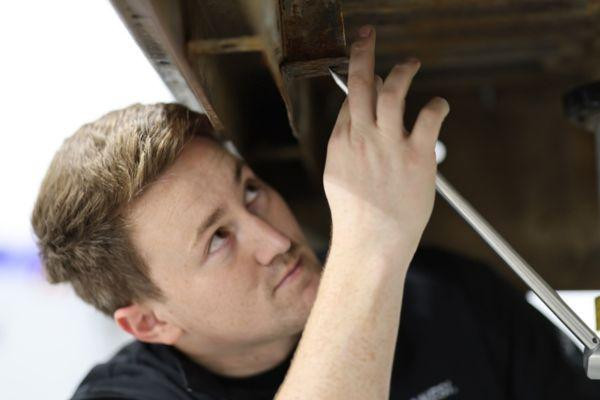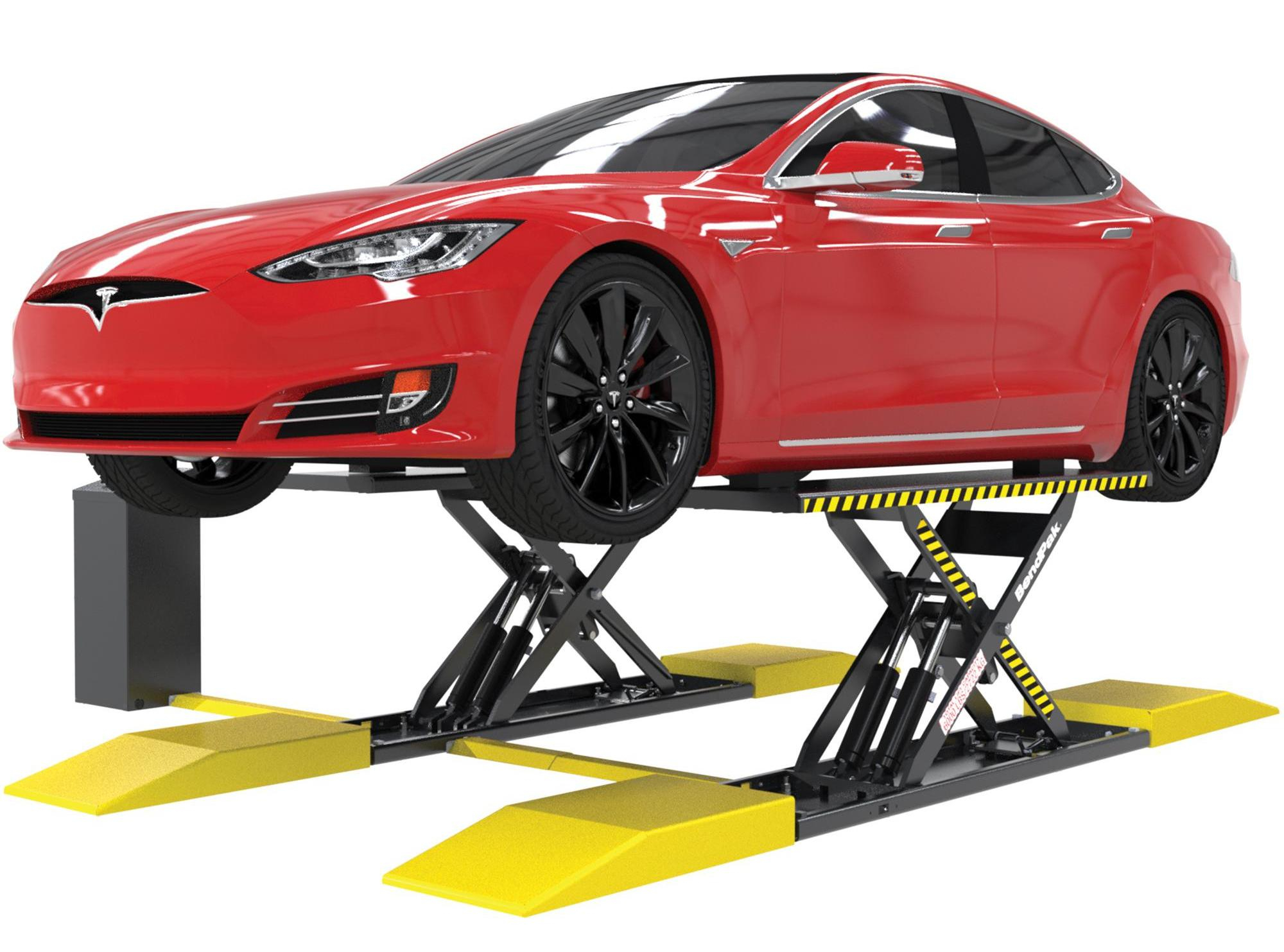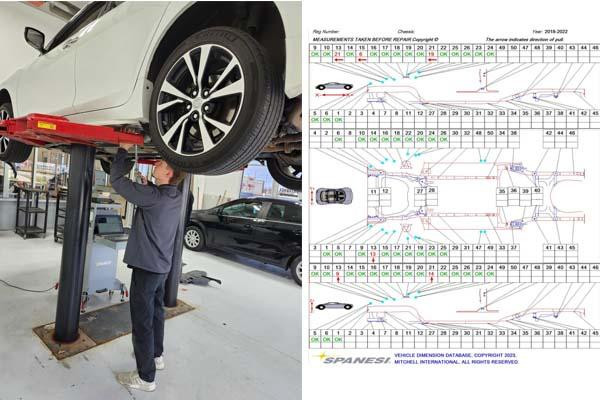Auto body shops are seeing advancements in vehicle materials, ADAS systems and OEM repair requirements. To stay competitive, they must invest in the right frame machines, alignment systems and lifts.
But with so many options, how do shop owners make the best decisions? Selecting the right collision repair large equipment is more than just price -- you must also consider long-term value, adaptability and future-proofing your business.
Autobody News turned to industry experts from Spanesi, Car-O-Liner® and BendPak to share key insights on equipment selection, common pitfalls to avoid and emerging trends in structural repair technology.
Key Considerations When Investing in Large Equipment
Alex Stapleton, North American sales director at Spanesi, emphasized three factors for shop owners to consider before investing:
• Most Commonly Repaired Vehicles: Shops should evaluate the types of vehicles they repair most often to ensure compatibility with the equipment.
• OEM Certifications: Shops should determine which OEM programs they want to participate in and ensure their equipment meets certification requirements.
 Alex Stapleton of Spanesi.
Alex Stapleton of Spanesi.
• Shop Layout and Size: The physical space available in a facility will dictate what equipment fits and functions efficiently.
John Shewbridge, collision training specialist at Car-O-Liner, added that a well-thought-out business plan with short-, medium- and long-term goals is essential before making any major purchase.
“Most shop owners buy based on immediate needs. While this will address short-term goals, it may not align with medium- and long-term goals,” Shewbridge said. “For example, to pursue an OEM certification program, you should determine what equipment is required and study what is recommended. Recommended equipment instead of required equipment will extend your ability to move more work through your facility and increase your profits.”
Tyler Rex, senior marketing director at BendPak, said safety is the most important factor when choosing collision repair large equipment, particularly lifts.
“Your technicians want to go home uninjured at the end of every shift. This is why we recommend buying only those that are ALI Certified regarding car and truck lifts. ALI Certified lifts have been third-party tested and validated to meet all the requirements of the national safety standard ANSI/ALI ALCTV as required by the International Building Code,” Rex explained.
 Tyler Rex of BendPak.
Tyler Rex of BendPak.
He also advised shops to consider the types of vehicles they service, ensuring lifts have adequate-rated capacity and can access OEM-recommended lifting points on these vehicles. Productivity features, such as more versatile swing arms and improved safety locks, can help techs do more in less time.
How OEM Certification Programs Influence Equipment Selection
OEM certification programs have significantly altered the way repair shops choose their equipment. According to Stapleton, these programs place a greater responsibility on shops to ask the right questions before a purchase. Shops must decide which OEMs to repair and ensure their equipment meets certification standards.
Shewbridge noted some shops are transitioning from direct insurance repair programs to OEM-certified repair models requiring specialized equipment. “Many accessories may appear to be a bit pricey, but they simplify repairs and contribute to a faster return on investment,” he said.
Common Mistakes When Purchasing Structural Repair Equipment
Both experts highlighted common pitfalls that shops should avoid:
Not Asking the Right Questions
• Shops often fail to ask equipment providers about long-term support, training and innovation.
• Many overlook the importance of universal fixtures and accessories that enhance repair efficiency.
Focusing on Price Over Long-Term ROI
• Buying based solely on price can lead to missed opportunities for OEM partnerships and adaptability.
• Investing in high-quality, multi-purpose equipment ensures a better, long-term return.
Ignoring Future Business Goals
• Equipment should align with future business growth and repair capabilities.
• Expansion into new vehicle models or OEM programs should be considered before purchasing.
The Impact of Advanced Vehicle Materials on Frame and Lifting Technology
 BendPak advises choosing lifts with the right capacity and features to boost efficiency and safely service various vehicles.The shift to vehicles produced with lighter, mixed materials, such as aluminum, high-strength steel and carbon fiber, redefines repair processes. Stapleton warned shops that fail to invest in modern equipment risk becoming obsolete.
BendPak advises choosing lifts with the right capacity and features to boost efficiency and safely service various vehicles.The shift to vehicles produced with lighter, mixed materials, such as aluminum, high-strength steel and carbon fiber, redefines repair processes. Stapleton warned shops that fail to invest in modern equipment risk becoming obsolete.
“Mixed material vehicles require fixturing systems to securely hold a vehicle for repairs. Shops that haven’t adapted are alienated from the industry,” he said.
ADAS Calibration and Structural Repair Equipment
ADAS (Advanced Driver Assistance Systems) calibration depends on precise structural alignment. A misaligned frame can lead to incorrect sensor and camera calibration, jeopardizing vehicle safety.
Stapleton recommended implementing a three-dimensional measuring system at the blueprinting stage to ensure accuracy throughout the repair process.
“Not only does this increase ROI, but it also minimizes liability,” he explained.
Emerging Trends in Structural Repair Technology
 On the left, the Spanesi Touch is being used at Graham Collision to help assess damage after the car arrives. After the assessment, a tech receives feedback from the machine, seen at right, that indicates how far out of spec the vehicle is.The collision repair industry is rapidly evolving. Here are some of the emerging trends that these experts have outlined for shop owners to stay ahead of new trends:
On the left, the Spanesi Touch is being used at Graham Collision to help assess damage after the car arrives. After the assessment, a tech receives feedback from the machine, seen at right, that indicates how far out of spec the vehicle is.The collision repair industry is rapidly evolving. Here are some of the emerging trends that these experts have outlined for shop owners to stay ahead of new trends:
• Electric Vehicles (EVs): Increased EV adoption requires specialized repair solutions.
• Automation & Smart Equipment: Modern lifts feature sensors, automatic positioning and integrated safety mechanisms for enhanced efficiency.
• Space-Saving Solutions: Equipment like BendPak’s parking lifts and portable EV battery lifts maximize productivity in smaller shop footprints.
• Shift Away from Pinch Weld Pulling: More manufacturers are eliminating pinch welds, making fixture benches essential.
• AI-Powered Damage Assessment: Combining AI with OEM-approved scanning tools is improving repair accuracy.
Future-Proofing Equipment Investments on a Budget
For growing repair shops looking to invest wisely, these individuals offer the following advice:
• Invest in Safety-Certified Equipment: ALI Certification ensures lifts meet stringent safety standards.
• Choose Equipment with a Proven Track Record: Invest in equipment from reputable manufacturers with strong customer support.
• Opt for Multi-Purpose Equipment: Tools that serve multiple functions will remain useful even as the shop grows.
• Plan for EV Growth: Even if a shop doesn’t see many EVs now, preparing for the transition can ensure long-term success.
• Prioritize Immediate Profitability: Equipment that generates revenue quickly makes budget allocation more manageable.
• Do Your Research: Shop owners should thoroughly research potential purchases, vendors and business strategies before committing.
Final Advice: Maintain Your Investment
Proper maintenance is crucial once a shop has invested in large equipment. Stapleton advised shop owners to understand and follow maintenance schedules to extend the lifespan of their tools.
“Take care of your equipment, and it will take care of you,” he said.
Making Smart Equipment Choices for Long-Term Success
Selecting the right collision repair large equipment is an important decision that impacts a shop’s efficiency, profitability and ability to adapt to industry changes. By considering their shop’s layout, OEM requirements and future growth, owners can make informed investments that position them for long-term success.
By avoiding common purchasing mistakes, embracing new repair technologies and prioritizing ROI over upfront costs, shop owners can equip their businesses for sustained success in an ever-evolving collision repair business landscape.













Leona Scott